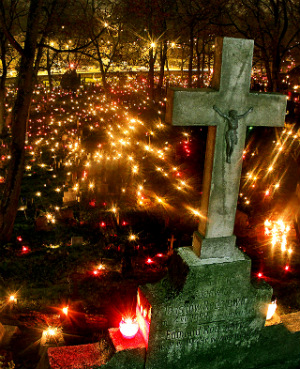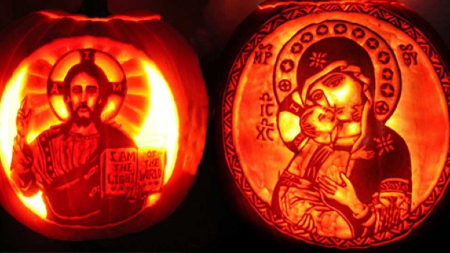We ask you, humbly: don't scroll away.
Hi readers, it seems you use Catholic Online a lot; that's great! It's a little awkward to ask, but we need your help. If you have already donated, we sincerely thank you. We're not salespeople, but we depend on donations averaging $14.76 and fewer than 1% of readers give. If you donate just $5.00, the price of your coffee, Catholic Online School could keep thriving. Thank you.Help Now >
Abbey of Flavigny
FREE Catholic Classes
A Benedictine abbey in the Diocese of Dijon, the department of Côte-d'Or, and arroundissement of Semur. This monastery was founded in 721, the first year of the reign of Thierry IV, by Widerad, who richly endowed it. According to the authors of the "Gallia Christiana" the new abbey, placed under the patronage of St. Prix, Bishop of Clermont, and martyr, was erected on the site of an ancient monastic foundation, dating, it is said, from the time of Clovis, and formerly under the patronage of St. Peter. This titular eventually overshadowed and superseded St. Prix. Pope John VIII dedicated the new church about the year 877, from which time the first patronage, that of St. Peter, appears to have prevailed definitively. The fame of Flavigny was due partly to the relics which it preserved, and partly to the piety of its religious. The monastery was at the height of its reputation in the eighth century, in the time of the Abbot Manasses, whom Charlemagne authorized to found the monastery of Corbigny. The same Manasses transferred from Volvic to Flavigny the relics of St. Prix. There were also preserved here the relics of St. Regina, whom her acts represent as having been beheaded for the faith in the borough of Alise (since called Alise-Sainte-Reine). The history of the translation of St. Regina (21-22 March, 864) was the subject of a contemporary account. Unfortunately the "Chronicle", the "Martyrology", and the "Necrology" of the Abbot Hugues, and the "Livre contenant les choses notables" have either perished or contain few facts of real interest. The liturgical books, notably the "Lectionary", have disappeared. The abbatial list contains few names worthy to be preserved, with the exception of that of Hugues of Flavigny. The monastery was rebuilt in the seventeenth century and occupied by Benedictines of the Congregation of St. Maur, who were actively employed in research concerning the historical documents of the abbey, but it disappeared during the French Revolution . Hitherto it had formed a part of the Diocese of Autun ; but after the concordat of 1802 the new partition of the diocese placed Flavigny in the Diocese of Dijon. Lacordaire rebuilt and restored all that remained of the monastery surrounded by a portion of its ancient estate, and established there a convent of the order of St. Dominic.
Join the Movement
When you sign up below, you don't just join an email list - you're joining an entire movement for Free world class Catholic education.
-

-
Mysteries of the Rosary
-
St. Faustina Kowalska
-
Litany of the Blessed Virgin Mary
-
Saint of the Day for Wednesday, Oct 4th, 2023
-
Popular Saints
-
St. Francis of Assisi
-
Bible
-
Female / Women Saints
-
7 Morning Prayers you need to get your day started with God
-
Litany of the Blessed Virgin Mary
All Saints' Day, Halloween and All Souls' Day: What's the difference?
-

Should Christians Celebrate Halloween?
-

Since when did Halloween become a Christian holiday?
-
ADORABLE: A Little Boy's Heartfelt Lunchtime Prayer
-
Scientists Decode 3,000-Year-Old Babylonian Tablet, Revealing Potential Location of Noah's Ark
Daily Catholic
 Daily Readings for Friday, November 01, 2024
Daily Readings for Friday, November 01, 2024 St. Valentine Berrio-Ochoa: Saint of the Day for Friday, November 01, 2024
St. Valentine Berrio-Ochoa: Saint of the Day for Friday, November 01, 2024 Litany of the Saints: Prayer of the Day for Friday, November 01, 2024
Litany of the Saints: Prayer of the Day for Friday, November 01, 2024- Daily Readings for Thursday, October 31, 2024
- St. Wolfgang: Saint of the Day for Thursday, October 31, 2024
- Memorare: Prayer of the Day for Thursday, October 31, 2024
![]()
Copyright 2024 Catholic Online. All materials contained on this site, whether written, audible or visual are the exclusive property of Catholic Online and are protected under U.S. and International copyright laws, © Copyright 2024 Catholic Online. Any unauthorized use, without prior written consent of Catholic Online is strictly forbidden and prohibited.
Catholic Online is a Project of Your Catholic Voice Foundation, a Not-for-Profit Corporation. Your Catholic Voice Foundation has been granted a recognition of tax exemption under Section 501(c)(3) of the Internal Revenue Code. Federal Tax Identification Number: 81-0596847. Your gift is tax-deductible as allowed by law.






 Daily Readings for Friday, November 01, 2024
Daily Readings for Friday, November 01, 2024 St. Valentine Berrio-Ochoa: Saint of the Day for Friday, November 01, 2024
St. Valentine Berrio-Ochoa: Saint of the Day for Friday, November 01, 2024 Litany of the Saints: Prayer of the Day for Friday, November 01, 2024
Litany of the Saints: Prayer of the Day for Friday, November 01, 2024

